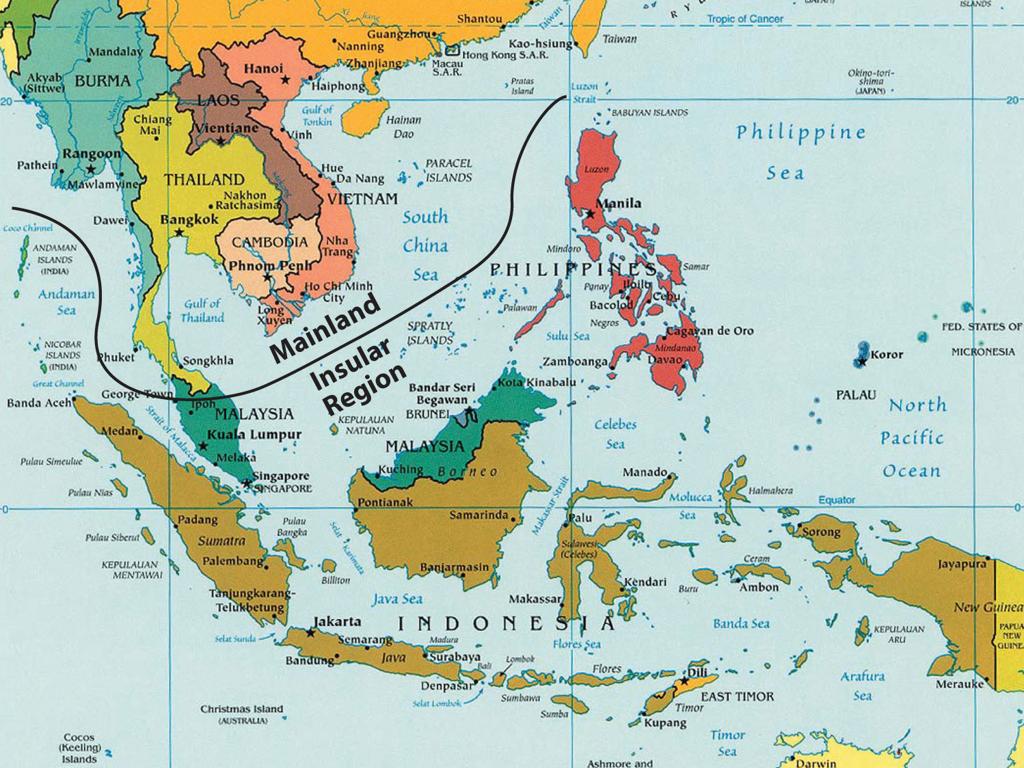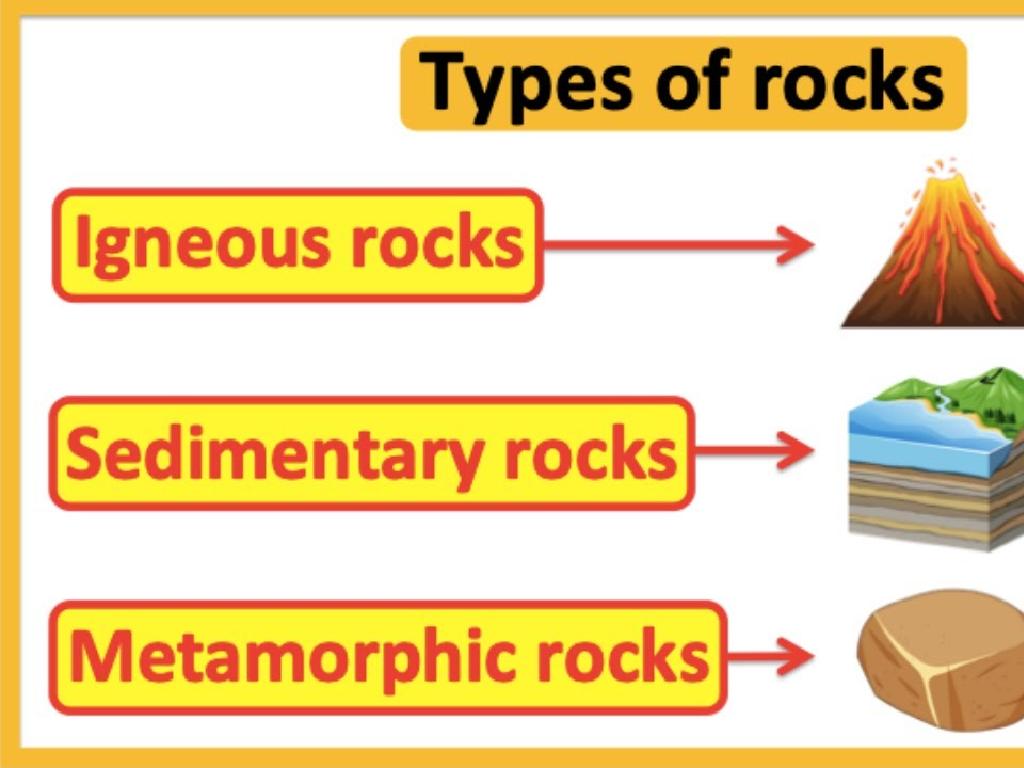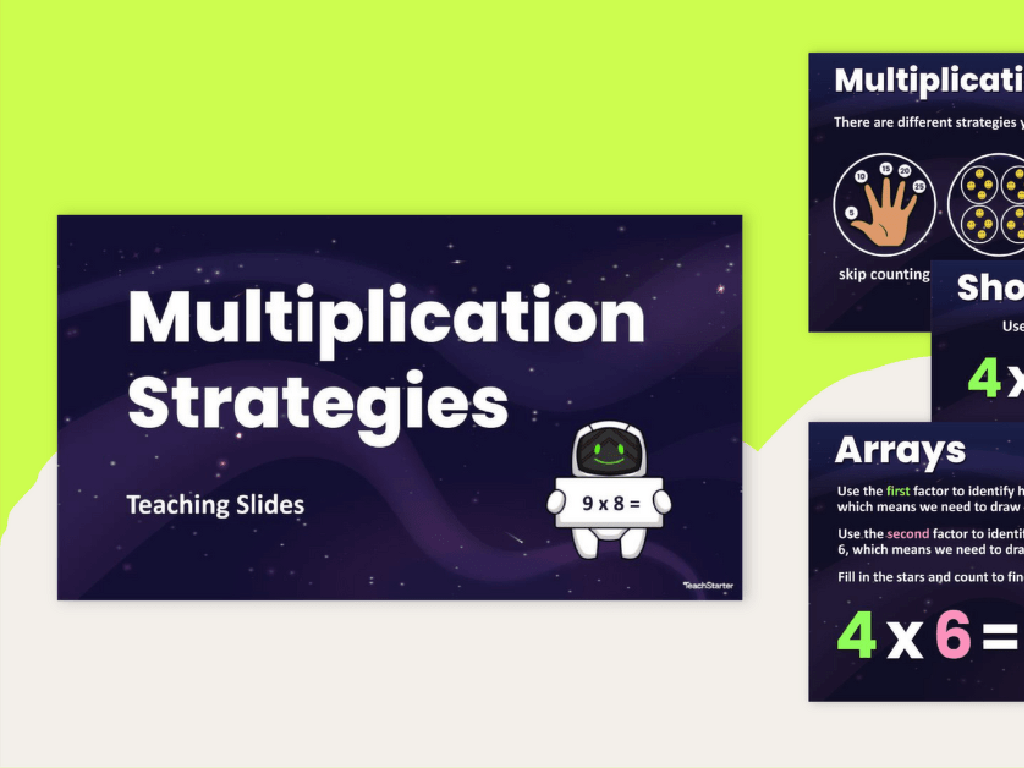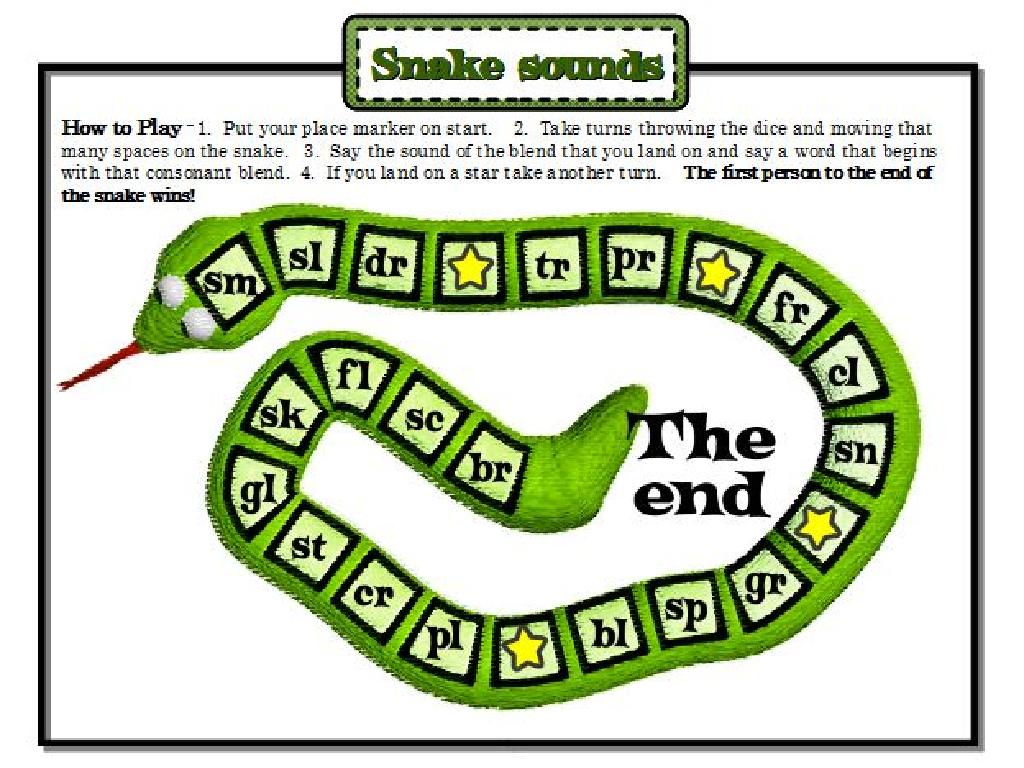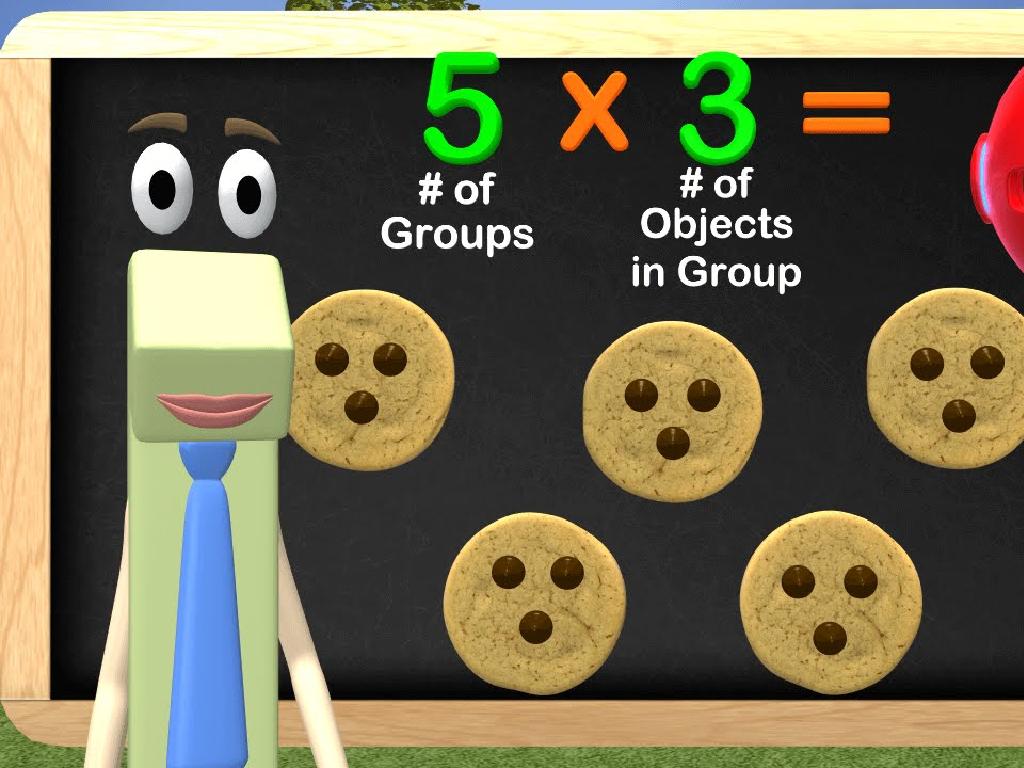Pollinator: Ruby-Throated Hummingbird
Subject: Science
Grade: Second grade
Topic: Animals
Please LOG IN to download the presentation. Access is available to registered users only.
View More Content
Welcome to the World of Pollinators!
– Meet the ruby-throated hummingbird
– What is a pollinator?
– Animals that help plants make seeds by moving pollen
– Importance of pollinators
– They help plants grow, breed, and produce food
– How hummingbirds help flowers
– By drinking nectar, they spread pollen to help more plants grow
|
Introduce the concept of pollination to the students by discussing the role of the ruby-throated hummingbird. Explain that pollinators are animals that move pollen from one flower to another, leading to the production of seeds. Emphasize the importance of pollinators in our ecosystem, as they are crucial for the reproduction of many plants, which in turn provide us with fruits, vegetables, and even the oxygen we breathe. Use the ruby-throated hummingbird as a specific example of a pollinator, describing how its feeding habits on flower nectar inadvertently help in the pollination process. Encourage students to think about other pollinators they may know and the different ways these animals help our environment.
Meet the Ruby-Throated Hummingbird
– What is a ruby-throated hummingbird?
– A tiny bird with bright feathers and fast wings.
– Unique features they have
– They have iridescent feathers and can hover in place.
– Where do they live?
– They live in gardens, woodlands, and near flowers.
– Why are they important?
|
This slide introduces second-grade students to the ruby-throated hummingbird, a fascinating pollinator. Begin by explaining what a hummingbird is, emphasizing its small size and vibrant appearance. Discuss the bird’s unique features, such as its iridescent feathers that can reflect sunlight and create a shimmering effect, and its ability to hover in mid-air due to rapid wing flapping. Explain that these birds are commonly found in gardens, woodlands, and anywhere with flowering plants, as they feed on nectar. Highlight the importance of hummingbirds in pollination and the role they play in helping plants grow. Encourage students to ask questions and share any experiences they have with observing hummingbirds.
The Role of Ruby-Throated Hummingbirds in Pollination
– What is pollination?
– Moving pollen from one flower to another to make seeds
– Hummingbirds as pollinators
– Ruby-throated hummingbirds carry pollen on their beaks and heads
– Flowers and hummingbirds
– They drink nectar and help flowers by spreading pollen
– Importance of pollination
|
This slide introduces the concept of pollination and the specific role of ruby-throated hummingbirds in this process. Pollination is crucial for the reproduction of many plants and the production of seeds. Explain that as these hummingbirds feed on the nectar of flowers, they inadvertently transfer pollen from one flower to another, aiding in plant fertilization. Highlight the mutual relationship between flowers and hummingbirds: flowers provide food, and hummingbirds assist in their reproduction. Emphasize the importance of pollination for our ecosystem and food supply. Encourage students to think about how animals, like hummingbirds, contribute to the environment in significant ways.
The Diet of a Ruby-Throated Hummingbird
– What do hummingbirds eat?
– They love sipping sweet nectar from flowers.
– Diet’s role in plant growth
– Their eating helps plants make seeds.
– Nectar’s importance
– Nectar gives them energy to fly and pollinate.
– Protecting hummingbird habitats
|
This slide introduces students to the diet of the ruby-throated hummingbird and its ecological role. Explain that these birds primarily eat nectar, which is a sweet liquid produced by flowers. Discuss how the act of feeding on nectar helps with the pollination of plants, leading to the production of seeds and the growth of new plants. Highlight the importance of nectar as a high-energy food source for hummingbirds, which enables them to perform their role as pollinators. Emphasize the need to protect natural habitats to ensure the survival of hummingbirds and the continuation of their role in the ecosystem. Engage students by asking if they have seen a hummingbird or a flower it might like, and encourage them to think about how they can help protect hummingbirds.
The Great Journey: Hummingbird Migration
– What does ‘migration’ mean?
– Migration is when birds travel far to find food or a warm home.
– Why hummingbirds fly away
– Ruby-throated hummingbirds migrate to stay warm and find food.
– The hummingbirds’ travel path
– They fly long distances, even over oceans, to reach their destination.
– How we can help them
– Planting flowers and having feeders helps them on their long trip.
|
This slide introduces the concept of migration, specifically focusing on the ruby-throated hummingbird. Migration is a seasonal movement of birds from one region to another. Ruby-throated hummingbirds migrate to escape the cold and find more food, which is scarce in winter. They travel thousands of miles, often crossing the Gulf of Mexico, to reach warmer climates. It’s important to discuss the challenges they face during migration, such as predators and the need for food. Encourage students to think about ways they can help these tiny travelers, such as by planting native flowers or setting up hummingbird feeders in their yards. This can be a great segue into a class project on creating a bird-friendly habitat at school or at home.
Protecting Our Pollinators: Hummingbirds
– Help protect hummingbirds
– Plant hummingbird-friendly flowers
– Flowers like zinnias and petunias attract hummingbirds
– Create safe environments
– Avoid pesticides, provide clean water, and safe spaces
– Importance of pollinators
|
This slide aims to educate second-grade students on the importance of protecting pollinators, specifically ruby-throated hummingbirds. Discuss ways to help these birds, such as planting flowers that provide nectar for them. Explain how creating a safe environment is crucial, which includes avoiding the use of harmful pesticides and providing clean water. Emphasize the role of hummingbirds in pollination and the ecosystem. Encourage students to think of ways they can make their own gardens or schoolyard more hummingbird-friendly. Share examples of hummingbird-friendly plants and discuss how students can help at home.
Class Activity: Creating a Hummingbird Garden
– Today we make a hummingbird garden!
– Pick flowers hummingbirds love
– Bright, tubular flowers like petunias and honeysuckle
– Learn what hummingbirds need to thrive
– They need nectar, places to perch, and water for bathing
– Discuss how gardens help pollinators
|
In this interactive class activity, students will learn about the ruby-throated hummingbird and the importance of creating a habitat that supports these pollinators. Begin by discussing the role of hummingbirds in nature and their pollination habits. Guide the students in choosing flowers that attract hummingbirds, focusing on those that provide ample nectar. Explain the birds’ needs for perching spots and water sources. Encourage students to think about how their gardens can become a haven for hummingbirds. Possible activities include drawing a garden layout, selecting flowers from a list, discussing the importance of clean water, and creating a hummingbird feeder craft.

